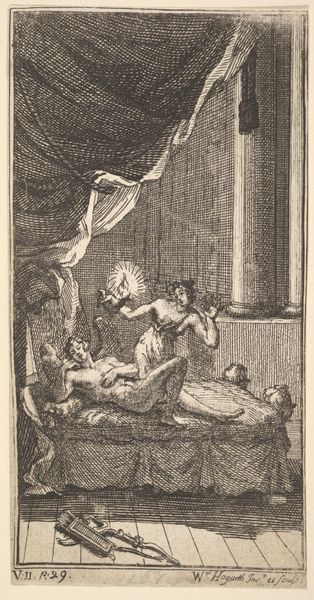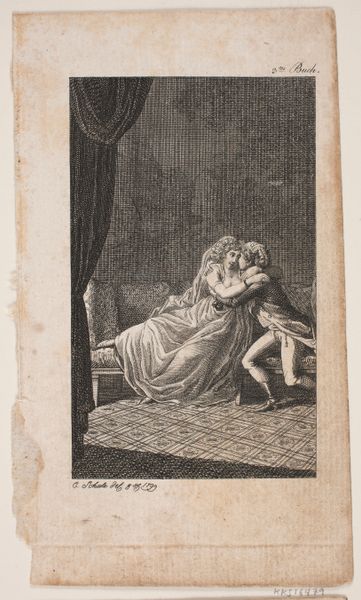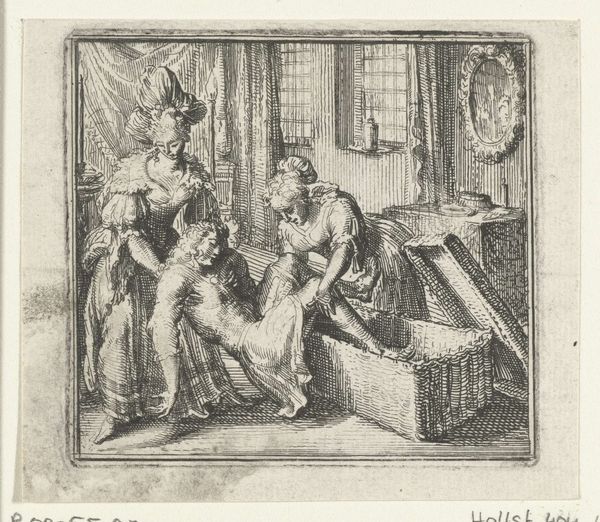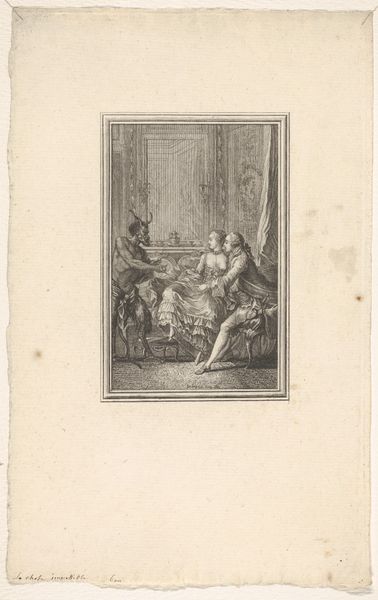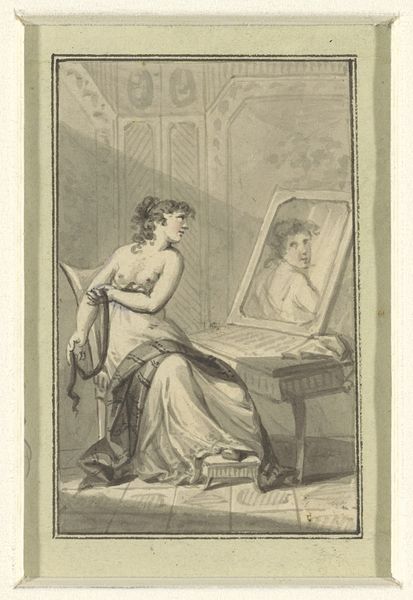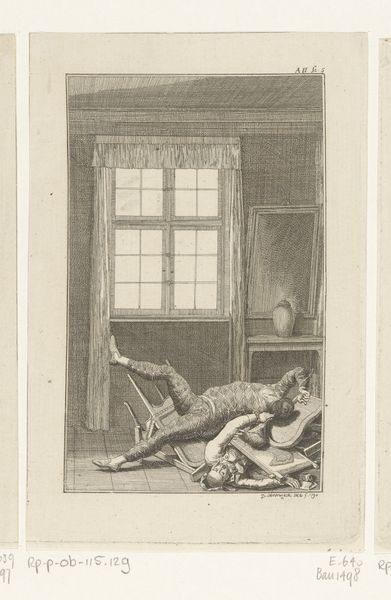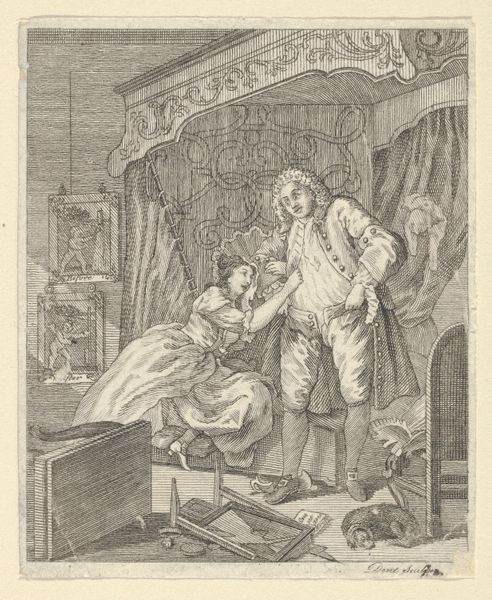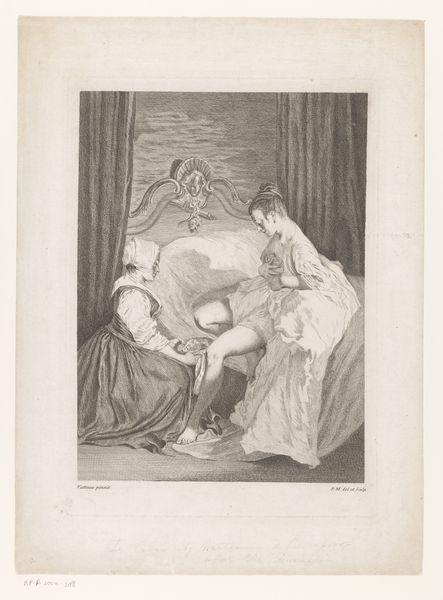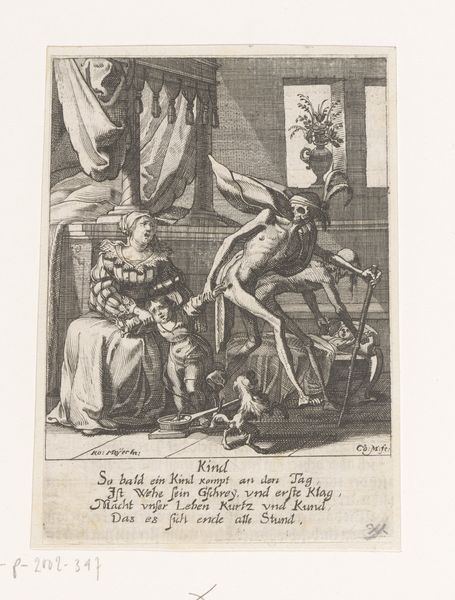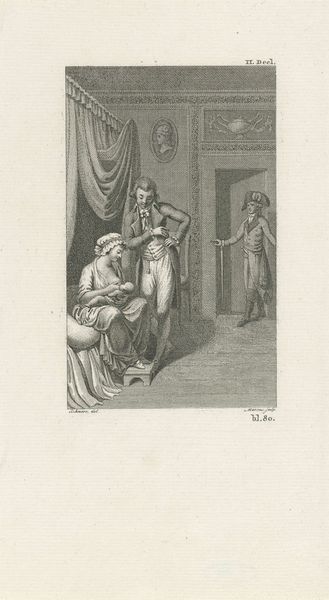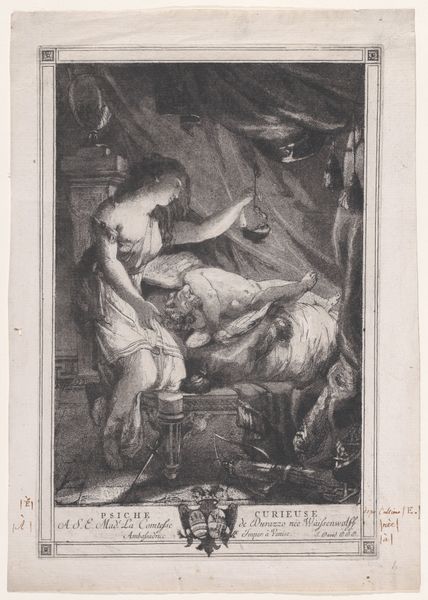
Illustration med en dame der spiller lut for en herre i et telt 1799
0:00
0:00
print, engraving
# print
#
figuration
#
romanticism
#
genre-painting
#
engraving
Dimensions: 155 mm (height) x 90 mm (width) (bladmaal)
Curator: Here we have "Illustration med en dame der spiller lut for en herre i et telt," created in 1799 by Georg Christian Schule. It is an engraving, a type of printmaking, and resides here at the SMK. Editor: My first impression is a feeling of confined drama. It's all happening within a very clearly defined space. I wonder, given the materials used, how that constraint influenced Schule's process. Curator: The "tent" immediately strikes me as a liminal space—somewhere between private and public, safe and vulnerable. Tents have a strong association with travel, nomadic lifestyles, and even military campaigns. Its cultural context points to a disruption of domesticity. Editor: Yes, and the crisp, controlled lines of the engraving emphasize the artificiality of the scene. Every single mark, every bit of cross-hatching, required immense pressure. Where does that labor originate? I see it in relation to its place as a print, intended for consumption, made in an increasingly unstable period. Curator: Indeed. Consider the figures: A woman plays a lute for a lounging gentleman in elaborate attire. The lute, traditionally a symbol of harmony and refinement, sets an idealized scene, almost dreamlike, particularly contrasted with the intimate setting. The scene almost mirrors paintings of mythological narratives. Editor: Right. The layering is all there, even in monochrome. I see that reflected in the production; The image's success hinges on the mark-making on the metal or wood block used, its endurance, and ultimately its mechanical reproducibility. Schule would have intended for it to circulate to various sets of eyes. Curator: This domestic performance then plays into that dissemination. We see both love and courtship as an economic transaction, where emotion is itself a spectacle to be consumed. It certainly resonates with a specific mode of self-presentation dominant in the era. Editor: I agree. The context of Romanticism, visible through this artwork's visual cues of interiority and implied emotion, underscores the transformation of private space into a site of theatrical display and production in the late 18th century. Considering this, I am impressed by the way a common technique, such as engraving, can inform art historical movements. Curator: Considering the cultural impact this seemingly simple image provides in context of the past centuries makes you rethink what's at stake when thinking about art today. Editor: Indeed. When seen from this light, understanding the history of artmaking may enlighten how we experience present artworks today.
Comments
No comments
Be the first to comment and join the conversation on the ultimate creative platform.
